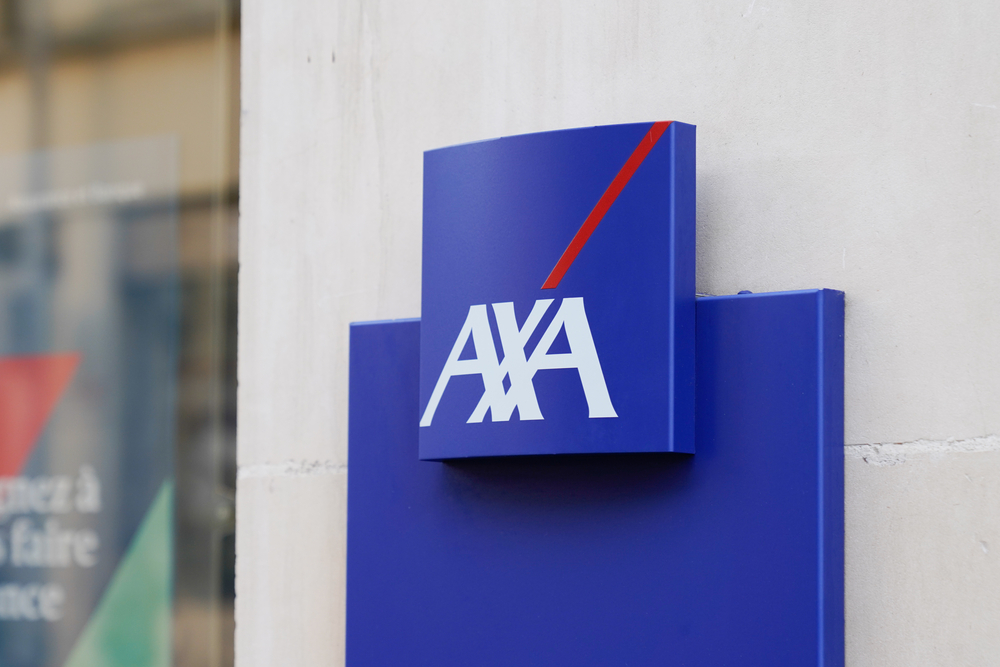A comprehensive overview of the latest developments in the (crypto) markets. Concisely summarized in a market commentary by the CVJ.CH editorial team. Market Commentary Bitcoin (BTC) This Tuesday, on the day of Coinbase’s IPO, Bitcoin reached a new all-time high at $64,900. Since then, we have seen a small correction (-5%) and are at $61,200. Currently, the price is at the old all-time high, just above the strong support zone around $60,000. An even deeper correction would not do much harm to the positive market structure, but could lead to a slightly longer consolidation phase. Ethereum (ETH) Over the past…
Author: Editorial Office CVJ.CH
AXA is the first all-lines insurance company in Switzerland to offer its policyholders the option of paying bills in Bitcoin. In doing so, it is investing in its digital development and responding to growing customer demand for more freedom of choice in payment transactions. As part of a market research study at the end of 2019, AXA surveyed people between the ages of 18 and 55 on the topic of cryptocurrencies. Even then, around a third of respondents said they owned them themselves, or were interested in them. The Corona crisis has once again accelerated the digital transformation over the…
In the first quarter, the crypto markets saw significant gains. Accordingly, it can be hard to keep track. The crypto market capitalization reached 2 trillion USD for the first time, while non-fungible tokens (NFTs) and the Binance Smart Chain gained momentum. The world’s leading cryptocurrency aggregator publishes a 50-page report every quarter. In their latest analysis of the market, they observed that decentralized finance (DeFi) on the Binance Smart Chain (BSC) grew significantly. Bitcoin also hit new all-time highs, while non-fungible tokens (NFTs) experienced the most hype. Crypto Market Capitalization over 2 Trillion USD At the end of Q1 2021,…
Evan GmbH is a software company with a focus on solutions that enable companies to collaborate efficiently, sustainably and securely with their partners and in the digital world. A conversation with CEO Thomas Müller about digital identity, sovereignty and DeFi. In recent years, a large part of the economy has shifted to the digital world. As such, relationships of trust have also become increasingly difficult. Permissionless, decentralized networks (blockchains) could perhaps offer a solution. Through decentralized financial applications (DeFi), it is already possible to use financial instruments without an intermediary. In 2018, Thomas Müller founded evan GmbH together with Thomas…
Just ahead of the Coinbase IPO at Nasdaq, the New York Stock Exchange (NYSE) is also venturing into the crypto world. With the launch of its own non-fungible tokens (NFTs), the NYSE is trying to preserve the unique experience of some stock exchange listings. The New York Stock Exchange (NYSE) is an institution steeped in history, facilitating the transition of many companies from private financing to public trading. As an institution, it gives a broad community of investors a chance to share in a company’s success. As an innovator in the world of public equities, NYSE is constantly looking for…
The largest cryptocurrency exchange in the US will list on the stock exchange on the 14th of April. Coinbase is avoiding the traditional initial public offering (IPO), in which investment banks fund the deal. Instead, the shares will be placed directly on the Nasdaq via a direct listing. The established financial system has not taken the crypto market seriously for a long time and has put various obstacles in the way of the pioneers. Coinbase has supported the movement since 2012, and enabled the simple transition from the fiat system to the crypto world. The IPO could be a turning…
In the last year, much has happened in the regulatory area around. After a long period of restraint, authoritative legal foundations for digital assets have emerged, particularly in the USA. First and foremost, the Securities and Exchange Commission (SEC). In an interview with Bitcoin.org, Hester Peirce looks at the market that has been growing for years and the innovations in the Blockchain sector. Indeed, these have increasingly been able to develop outside the United States. The United States is lagging behind in terms of regulation, according to Peirce. “It’s foolish to stymie the innovations around Bitcoin, and not take advantage…
A summarizing review of what has been happening at the crypto markets of the past week. A look at trending sectors, liquidity, volatility, spreads and more. The weekly report in cooperation with market data provider Kaiko. The last 7 days in cryptocurrency markets: Price Movements: Ethereum reached a new all time high of $2’190 and Bitcoin again broke $60k on the eve of Coinbase’s public listing. Volume Dynamics: Stablecoins now surpass Bitcoin as the dominant quote asset in crypto markets. Order Book Liquidity: Coinbase’s order book liquidity is the strongest out of all fiat exchanges but lags that of Binance,…
Bitcoin USD daily basis Bitcoin USD Chart Analysis – Consolidation below 60’000 USD The reporting week was quiet in terms of Bitcoin volatility ratios. Throughout the week, the main trading activity was concentrated in the 58′,000 USD – 59’000 USD range. Mid-week, the price set off for a test of the current market strength on Wednesday with a small setback back to the 56’000 USD level. On Thursday, the market provided a clear answer that the time for major corrections has not yet come with a snap back to the level of 58’000 USD. Accordingly, the price trend at the…
Last Thursday, the Kessel Group presented at the digital congress “Classic Car Marketing” how modernity can be combined with tradition. Because for a good year now, the company has been accepting Bitcoin as a means of payment for the purchase of their vehicles. The demand for classic cars has been increasing, especially since the beginning of the pandemic. On the one hand, it is the desire to fulfil a dream, on the other hand, Classic Cars are seen as an investment. For the purchase of these vehicles, digital currencies are increasingly preferred, especially by international customers. Easy payments with Bitcoin…
A summarizing review of what has been happening at the crypto markets of the past week. A look at trending sectors, liquidity, volatility, spreads and more. The weekly report in cooperation with market data provider Kaiko. Q1 Trade Volume Breaks New Record Q1 2021 has come to a close, and with it one of the most consequential quarters in the history of crypto. A wide range of milestones was reached across various sectors of the industry: Tesla purchased a historic amount of bitcoin for its balance sheet, a record number of firms submitted crypto ETF applications, Visa enabled stablecoin settlement,…
Asset manager CoinShares is adding a Litecoin ETP to its number of investment products with the launch of a new exchange-traded product (ticker: LITE). The Swiss Stock Exchange (SIX) has already added a few crypto ETPs to its platform before. CoinShares’ investment products offer exposure to Bitcoin (BTC), Ethereum (ETH) and now Litecoin (LTC). They are available to qualified institutional and retail investors across Europe. Rising demand for crypto assets LITE will initially be listed on the regulated SIX Swiss Exchange (ISIN: GB00BLD4ZP54) and has a base fee of 1.50% per annum. Each unit of LITE is backed by 0.20…
Bitcoin USD daily basis Bitcoin USD Chart Analysis – Consolidation below 60’000 USD The reporting week was very quiet in terms of Bitcoin volatility ratios. The declining volume may also be attributed to the Easter holiday. Monday started auspiciously for the bulls, as Bitcoin was able to break the previously formed bull flag to the upside. The breakout took the price back above the 57’500 USD mark. However, with 58’873 USD at the end of the day on Tuesday, a higher level was reached once again. Around the zone of 58’000 USD, trading activities had already taken place frequently two…
Contrary to what is portrayed in public debates and the media, neither the length of the Blockchain, nor the number of transactions have a major impact on energy consumption. An overview of the carbon footprint of Bitcoin, Ethereum and non-fungible tokens (NFTs). Two distinct parts add up to the total consumption of Blockchains like Ethereum and Bitcoin. The first part is for running the computers on which a Blockchain is stored – called nodes. The official number of nodes for both Bitcoin and Ethereum is around 10’000 – although it is suspected that many more nodes conceal their existence. The…
Myths and facts about Bitcoin are abundant and everywhere. But which of them actually reflect the truth? We provide an overview of the five most common myths about the mother of all cryptocurrencies, as well as the facts behind them. “Bitcoin is used primarily by criminals to launder money” Bitcoin transactions can be viewed by everyone due to the open bookkeeping via blockchain technology. This makes Bitcoin a bad option for criminals and money launderers. After all, authorities can investigate all transactions on the blockchain directly from their desk and without any problems. Offshore constructs and the traditional banking system…
A summarizing review of what has been happening at the crypto markets of the past week. A look at trending sectors, liquidity, volatility, spreads and more. The weekly report in cooperation with market data provider Kaiko. The last 7 days in the cryptomarkets: Price Movements: Crypto assets powering blockchain networks have seen triple digit returns throughout 2021 ranging from +100% to +600%. Trading Volume: The average trade size for BTC-USD markets has doubled on most exchanges since October 2020. Order Book Liquidity: The bid-ask spread is narrowing for crypto-fiat trading pairs after a prolonged period of volatility. Volatility and Correlations:…





















